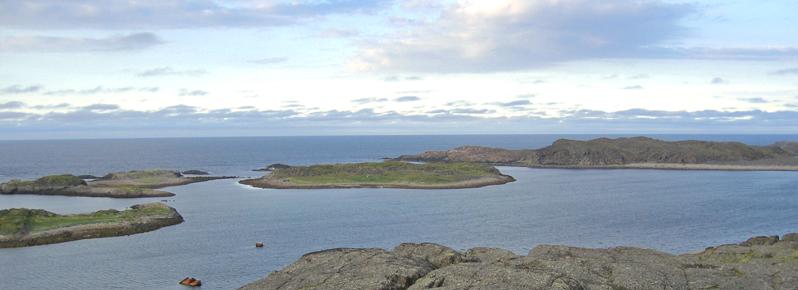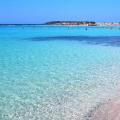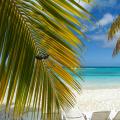Do you know where the Barents Sea is? It is located on the outskirts of the Arctic Ocean. Until 1853 it had a different name - the Murmansk Sea. It washes the shores of Norway and Russia. Speaking about where the Barents Sea is located, it should be noted that it is limited by the Novaya and Spitsbergen archipelagoes, as well as the northern coast of Europe. Its area is 1424 thousand square meters. km. Coordinates: 71 ° N latitude, 41 ° east e. In some places, the depth Barents Sea reaches 600 m.
To say that their findings were impressive holds a euphemism. Israel has already begun to strengthen security measures around its offshore platforms. The fleet breeds patrols at sea, uses aircraft and especially unmanned aircrafts to carry out observation missions. The Israeli navy is demanding a budget increase of 200 million euros to acquire new powerful and well-armed boats.
Click on the preview to enlarge the computer graphics. The sunlight still illuminates the harbor and the snow-capped hills of milky light. Wooden houses, ocher, reds and pastel greens, have a touch of color in the harsh landscape of this early summer Arctic.
The reservoir of interest to us is located on the continental shelf. In winter, its southwestern part does not freeze, as this is impeded by the North Atlantic Current. The Pechora Sea is its southeastern part. The Barents Sea is very important for fishing and transport. There are large ports here - Vardo (Norway) and Murmansk. Finland also had an outlet to this sea before World War II: Petsamo was its only ice-free port in winter.
For Kirkenes, on the shores of the Barents Sea, it is a necessary crossroads for a huge burial ground under the Arctic Ocean. Interest in these reserves has doubled over the past month. On April 27, on the occasion of the visit of Russian President Dmitry Medvedev to Oslo, Norway and Russia, the territorial dispute over the 1000 km sea zone ended.
Sharing a common economic interest was the main driving force behind the diplomatic settlement of this border conflict, analyzes Norwegian Foreign Minister Jonas Garr in his beautiful French. In an image broadcast in recent media in a rush on the Pole's black gold and the risks of military escalation, the store minister opposes the logic of cooperation.
Today the places where the Barents Sea is located are heavily polluted. Radioactive waste falling into it is a serious problem. An important role in this is played by the activities of the nuclear fleet of our country, as well as the factories of Norway dealing with the processing of radioactive waste in such a body of water as the Barents Sea. The boundaries of its belonging to separate states (sea shelf) have recently been the subject of territorial disputes between Norway and Russia, as well as some other countries.
The Barents Sea and the Arctic Ocean as a whole are full of hydrocarbons, most of which nest under the continental shelf, with water only a few hundred meters deep. Norwegian Foreign Minister Eric Lanstein said 40% of the world's oil discoveries and 30% of gas discoveries are in the Arctic, and that nine-tenths of them will be in Russian waters. with tweezers, all experts agree.
In the Arctic, the Russians, due to their lack of technological prowess, have not yet exploited offshore fields. A border agreement with Russia opens up a new area, one-fifth of Norway, for exploration closer to shore than Chtokman. On the Norwegian side, environmental regulations require years of study before exploration begins AND the Russians do not have the technology to start an adventure on their side of the sea border.
History of the study of the sea
Let us now tell you in more detail about the reservoir of interest to us. Let's start with historical information about him. Since ancient times, people have known where the Barents Sea is, although its name used to be different. The Sami (Lapps), the Finno-Ugric tribes, lived near its shores. The first visits by Europeans (first the Vikings, and then the Novgorodians) date back to the end of the 11th century. Gradually they became more and more frequent. The map shown in the photo below was compiled in 1614.
Runa Rafaelsen is convinced that "these decades of joint work in the world are the best guarantee of peace." Russia is a country of Eastern Europe and North Asia. In Russian, the name of the country is Russia. Moscow the capital. Map of Russia Map of Russia Map of Russia Map of Russia.
Russia borders the Arctic Ocean to the north; in the east - across the Pacific Ocean through the Bering Strait, the Bering Sea, the Sea of Okhotsk and the Sea of Japan; in the south - North Korea, China, Mongolia, Kazakhstan, the Caspian Sea, Azerbaijan, Georgia and the Black Sea; in the west - Ukraine, Belarus, Latvia, Estonia, the Baltic Sea, Finland and Norway. Russia has the enclave of Kaliningrad, located between Lithuania and Poland, as well as a number of islands in the Arctic Ocean and the Pacific Ocean.
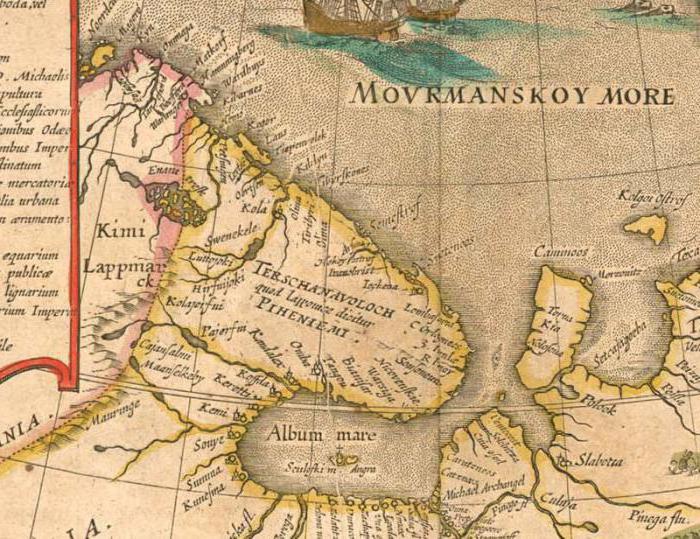
In 1853, the Barents Sea received its modern name in honor of Willem Barentsz, a Dutch navigator. The beginning of its scientific study was laid by the expedition of 1821-24, led by F.P. Litke. And at the beginning of the 20th century, N.M. Knipovich compiled the first reliable and complete hydrological characterization of it.
The Federation of Russia is a federal republic consisting of 21 republics, 6 territories, 49 regions, 10 autonomous districts, the Jewish Autonomous Region of Birobidzhan and two cities of federal status, Moscow and St. Petersburg. Russia can be divided into four main geographic regions: European Russia, Western Urals, Western Siberia, Eastern Siberia and the Russian Far East. The general relief consists of vast plains and plateaus bordering south and east with a discontinuous belt of high peripheral mountains.
Density and general vulgarity give the landscapes a highly monotonous character. There are, however, some heights: the Khibiny mountains, on the Kola peninsula; Valdai Plateau, west of Moscow. It is for this reason that hydrographic network European Plain. Quaternary glaciations have left their mark, especially in the northwest, where they are located at the beginning of numerous lake basins.
Geographical position
Let's tell you more about where the Barents Sea is located on the map. It is located on the border of the Arctic Ocean with the Atlantic. It is the marginal water area of the first. The Barents Sea on the map is located between the islands of Franz Josef Land, New earth and Vaygach in the east, in the south it is bounded by the northern coast of Europe, and in the west - by Bear Island and Spitsbergen. The reservoir of interest to us is bordered in the west by the Norwegian Sea, in the east by the Kara Sea, in the south by the White Sea, and in the north by the Arctic Ocean. The Pechora Sea is the name of its area, located to the east of the island. Kolguev.
South part The European Plain is characterized by very fertile black soils, especially in the Don, Volga and Kuban basins. In the south, between the Black and Caspian Seas, stands the Caucasian mountain barrier, a young, high seismic mountain. The Great Caucasus in the north forms the border with Georgia and Azerbaijan. In the east, European Russia is bordered by Ural mountains, a very eroded ancient massif of medium height. These are mountains rich in mineral deposits.
It is formed by lowlands, extremely flat and poorly depleted. Covered with glacial deposits, a legacy of Quaternary glaciers, the region is dotted with lakes and swamps. In the region, where ditches and deep canyons flow, there are many mineral deposits. On the southern borders there is a high-altitude barrier formed by Altai and the Sayan Mountains.
Coastline
Basically, the shores of the Barents Sea are fjord. They are rocky, tall and heavily indented. The largest bays of the Barents (also known as the Kola Bay, Motovsky Bay, etc.) The coastal relief to the east of the Kanin Nos Peninsula changes dramatically. They become low and mostly weakly indented by its shores. There are 3 large shallow bays: Khaipudyr, Pechora and Czech Bay. In addition, there are several small bays.
To the east of the Lena they rise mountain ranges Of the Far East Russia, from the Kolyma Mountains in the north, the Verkhoyansk Mountains to the south, the Stanovsk Mountains and Yablonovye Mountains to the southwest, and the southeast to the Sikhote-Aline Mountains. To the east, bordering the Pacific Ocean, new and higher chains rise. Volcanic activity is important in this region, which is part of the Pacific Belt of Fire. There are 120 volcanoes on the Kamchatka Peninsula, 23 of which are still active. The volcanic chain of Kamchatka extends south for Kurile Islands, where there are also about a hundred volcanoes, of which 35 are active.
Islands, archipelagos, rivers
The islands of the Barents Sea are few in number. The largest of them is Kolguev. The sea is bounded from the east, north and west by the Novaya and Spitsbergen archipelagoes. Most large rivers that flow into it are Indiga and Pechora.
Currents
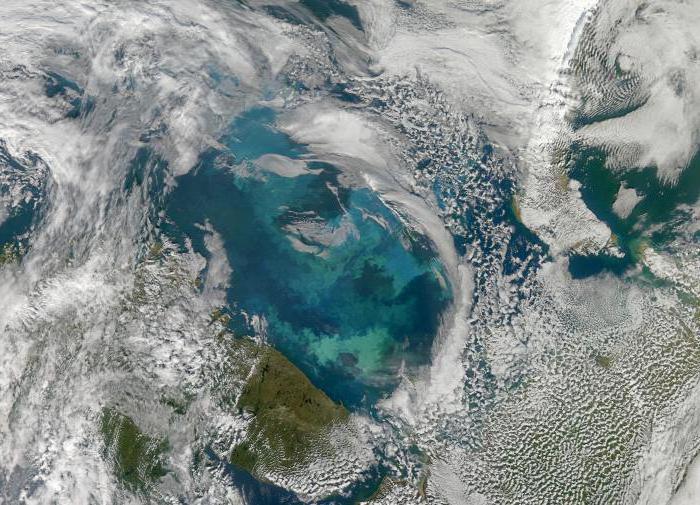
The circulation formed by surface currents is carried out counterclockwise. The Atlantic waters of the North Cape Current move to the north and east along the eastern and southern periphery. It is warm because it is one of the branches of the Gulf Stream system. Its influence can be traced right up to Novaya Zemlya and its northern shores. The western and northern parts of the Gyre are formed by the Arctic and local waters that come from the Arctic Ocean and the Kara Sea. In the central part of the Barents Sea, there is a system of intracircular currents. Under the influence of changes in wind directions, as well as water exchange with nearby water bodies, water circulation changes. Tidal currents are of great importance. It is especially great near the coast. The tides of the Barents Sea are semi-daily. Their largest size is 6.1 m and is observed near the coast. Kola Peninsula... As for the rest of the places, the magnitude of the tides in them is from 0.6 m to 4.7 m.
Most of the territory of Russia is subject to serious continental climate, with long and cold winters, hot but short summers and limited intermediate seasons. Most of the country experiences over 120 frost days a year. Several factors interfere: high latitude, huge continental expansion, and lack of moderate maritime influence.
The latitude explains the cold a lot. Russia is a Scandinavian country crossed by the Arctic Circle, and almost 85% of the territory is north of the 50th parallel. Absence northern reliefs facilitates the penetration of polar cold air masses. And vice versa, high mountains along southern border prohibit almost any penetration of tropical air masses. Because of the continental immensity of the ocean, the boundaries of the ocean have only a very weak moderate effect. The Arctic Ocean is frozen for most of the year. Coasts Sea of Okhotsk and Sea of Japan caught in ice for several months of the year.
Water exchange
Of great importance in maintaining the water balance of this sea is water exchange, which is carried out with neighboring seas. Through the straits, about 76 thousand cubic meters of water enter the reservoir during the year. km of water (the same amount comes out of it). This is about a quarter of the total water volume. The largest amount (about 59 thousand cubic kilometers per year) is brought by the North Cape Current. It is warm and strongly affects the hydrometeorological indicators of the Barents Sea. About 200 cubic meters km per year is the total river flow.
Lapland occupies the extreme north of the European continent and extends through four countries: Norway, Sweden, Finland and the Kola Peninsula in Russia, borders the North Atlantic and the Arctic Ocean and “intersects” the Baltic Sea, Lapland is located at the same latitude as Siberia and Greenland , but temperatures are several degrees higher, heated by hot air masses coming from the Atlantic. even though the Gulf Stream is heated by the Gulf Stream, allowing the coastal regions of the ocean to receive winter from a moderate low temperatures, and the sea never freezes, and the ports are used all year round without the risk of finding. For this reason, cities such as Narvik, Tromsø, Alta, Hammerfest or Murmansk were built there.
Salinity
During the year in the open sea, the salinity of the surface layer ranges from 34.7 to 35% in the southwest, from 33 to 34% in the east and from 32 to 33% in the north. In summer and spring, in the coastal strip, it drops to 30-32%. And towards the end of winter, salinity increases to 34-34.5%.
Geological data
The sea of interest to us is located on the Barents Sea plate. Its age is defined as Proterozoic-Early Cambrian. Syneclises - bottom depression, anteclise - its elevation. As for the shallower landforms, there are remains of ancient coastlines at depths of about 70 and 200 meters. In addition, there are glacial-accumulative and glacial-denudation forms, as well as sand ridges formed by large tidal currents.
From north to south, Sweden and Norway share the Skandes mountain range, which also includes a small part of Finland to the northwest. The various glaciations of the Quaternary era deeply reflect the landscapes. The two main mountain ranges- Kebnekaise and Sarek, located northwest of Swedish Sapmi. The most high peak in Lapland it is Kebnekaise.
The mountains are marked by glaciers. It is mountainous in its western part and slopes gently towards the Gulf of Bothnia. Moraine soils, cliffs, lakes and marshes testify to the ancient presence of an ice cap, rivers and streams are sometimes deciduous, and boreal forest covers most of the territory. water, water and forests. In the east, the coast, dotted with islands and islets, borders the Gulf of Bothnia, and then reaches Baltic Sea further south. There are 28 in Sweden national parks... It was even the first country in Europe to create it.
Barents Sea bottom
This sea is located within the boundaries of the continental shelf. However, unlike similar reservoirs, in a fairly large part of the Barents Sea is about 300-400 meters deep. The maximum is 600 meters, and the average is 229. As for the bottom topography, there are highlands (Perseus with a minimum depth of about 63 meters and the Central), plains (Central plateau), troughs (Western, the maximum depth of which is 600 meters, and Franz Victoria (about 430 meters), etc.), depressions ( maximum depth Central depression - 386 meters). If we talk about the southern part of the bottom, its depth rarely exceeds 200 meters. It has a fairly leveled relief.
Sweden, despite its latitude, enjoys temperate climate overall thanks to the Gulf Stream. At the same latitude as Alaska or Siberia, in addition to the landscapes, the sun is an additional gift. Even if the effects of global warming are now tangible, and the retreat of glaciers is visible to the naked eye, the basic rule remains: regardless of the weather and season, never leave without your little wool and jacket. Everything can change at a blinding speed.
Essentially mountainous, it has many fjords and very sharp edges. Finnmark is the northernmost part of it. It is washed by the arctic Arctic Ocean and consists of nearby islets and high plateaus. The vegetation is of a tundra type, rather desert, with some areas of permafrost.
Soil composition
In the southern part of the sea of interest to us, sand prevails in the cover of bottom sediments. Crushed stone and pebbles are sometimes found. On the heights of the northern and central parts- sandy silt, silty sand, and there is silt in depressions. Everywhere there is a coarse impurity. This is due to the spread of ice, as well as to the large distribution of relict glacial deposits. In the middle and northern parts, the thickness of the sediments is less than 0.5 m. Because of this, ancient glacial deposits on some elevations are located almost on the surface. Sedimentation occurs at a slow rate (less than 30 mm per thousand years). This is due to the fact that terrigenous material is supplied in insignificant quantities. The fact is that due to the peculiarities of the coastal relief, large rivers do not flow into the Barents Sea, with the exception of the Pechora, which leaves almost all alluvium in the Pechora Estuary. In addition, the shores of the land are composed mainly of crystalline rocks, rather strong.
Kinnarodden is the northernmost cape of the European continent and is located on Severnkinn, the neighboring peninsula of the North Cape. A spectacular sight of the tundra, as far as the eye can see, barely animated by a herd of reindeer, dotted with bouquets of birch trees that are resistant to everything, or the brave pines that know how to take a hit under these latitudes, rip up wild rivers, evacuating water taken hostage by ice throughout the rest still influenced by the Atlantic and the Gulf Stream, the country enjoys a relatively mild climate for its latitude.
Climate

Let us now tell you about the climate of such a reservoir as the Barents Sea. The Atlantic Ocean (warm) and the Arctic Ocean (cold) have an impact on its formation. The fact that weather conditions are highly variable is due to the frequent intrusion of arctic cold air and Atlantic warm cyclones. Over the sea in winter, mainly south-westerly winds blow, and in summer and spring, north-easterly ones. Storms are here often. In February, the air temperature averages from -25 ° C (in the northern regions) to -4 ° C in the southwestern ones. Cloudy weather prevails over the sea throughout the year. The amount of precipitation per year in the northern regions is 250 mm, and in the south-western regions - up to 500 mm.
This part is located on the Kola Peninsula. The northern coast is steep and elevated, the southern coast is flat. In the western part of the peninsula, the Khibiny Mountains and the Lovozero Mountains, there are two mountain ranges. In the central part of the peninsula is the watershed of the Kevin Heights. It consists of tundra, forests, lakes, swamps and rivers. There is also the most deep drilling in the world dug up by the Russians.
It is located about a few kilometers south of the Arctic Circle. Its headquarters are located in Arvidsjaur. The city is located about 50 km north of the Arctic Circle. It is also on the way of the railway line connecting Luleå and Narvik via Kiruna. It is located along the European road. Jukkasjärvi is a city of 541 inhabitants in the commune of Kiruna in Sweden, about 200 km north of the Arctic Circle.
Ice cover
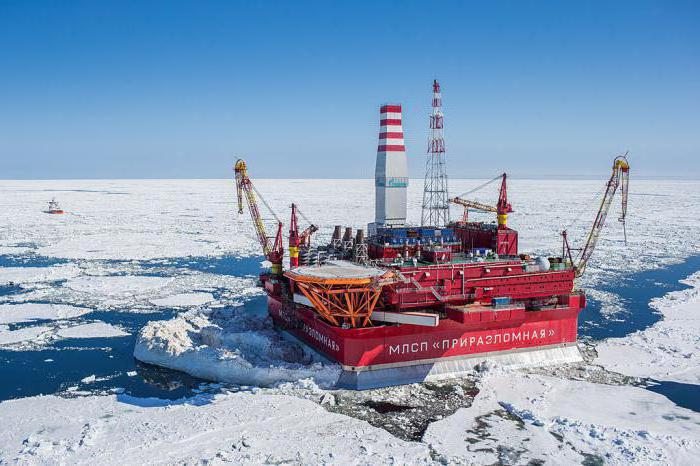
In the east and north of the Barents Sea climatic conditions pretty harsh. This determines its significant ice extent. Only the southwestern part of the sea of interest to us remains free of ice all year round. Its cover reaches its greatest distribution in April. This month, floating ice covers about 75% of the entire surface of the Barents Sea. At the end of winter, in especially unfavorable years, floating ice reaches the shores of the Kola Peninsula. The smallest number of them is observed at the end of August. The border of ice these days is being pushed back beyond 78 ° north latitude. In the northeast and northwest of the sea, ice is usually preserved throughout the year. Nevertheless, sometimes the sea is completely free of them.
Barents Sea temperature
The relatively high salinity and temperature in the southwestern part of this reservoir determines the influx of Atlantic warm waters here. From February to March in these areas, the surface water temperature ranges from 3 ° C to 5 ° C. It can reach 7-9 ° C in August. In the winter months in the southeastern part, as well as north of 74 ° north latitude, the surface temperature of the Barents Sea drops below -1 ° C. In the southeast in summer, it is 4-7 ° C, and in the north - about 4 ° C. In the coastal zone, in the summer months, the surface water layer can warm up at a depth of 5 to 8 meters to 11-12 ° C.
Fauna and flora
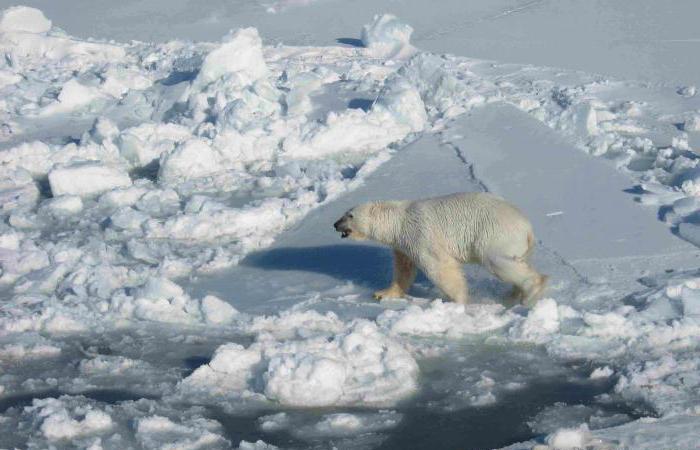
The Barents Sea is home to many species of fish (there are 114 species of them). There is a rich animal and plant plankton and benthos. Seaweed is common off the southern coast. The most important fish species in commercial terms are herring, haddock, cod, catfish, sea bass, halibut, flounder, etc. Among mammals, there are seals, polar bears, beluga whales, etc. At present, the fishing is carried out for seals. There are many bird colonies on the coasts (sea gulls, guillemots, guillemots). In the 20th century, they were brought to these territories. He managed to adapt and begin to actively reproduce. Lots of sea urchins, a variety of echinoderms, different types sea stars are distributed along the bottom of the water area of interest to us.
Economic value, industry and shipping
The Barents Sea is very important both for the Russian Federation and for Norway and a number of other countries. Russia is actively using its resources. It is rich in a variety of fish species, animal and plant plankton, and benthos. Thanks to this, fishing is actively carried out in the Barents Sea. Russia also extracts hydrocarbons on the Arctic shelf. Prirazlomnoye is a unique project in our country. For the first time, hydrocarbons are produced from a stationary platform in this area. The platform (OIRFP "Prirazlomnaya") allows to carry out all the necessary technological operations right on the spot. This greatly simplifies the mining process.
The sea route connecting the European part of our country with the eastern ports (from the 19th century) and Western countries(from the 16th century), as well as Siberia (from the 15th century). The largest and main port in Russia is Murmansk (pictured below).
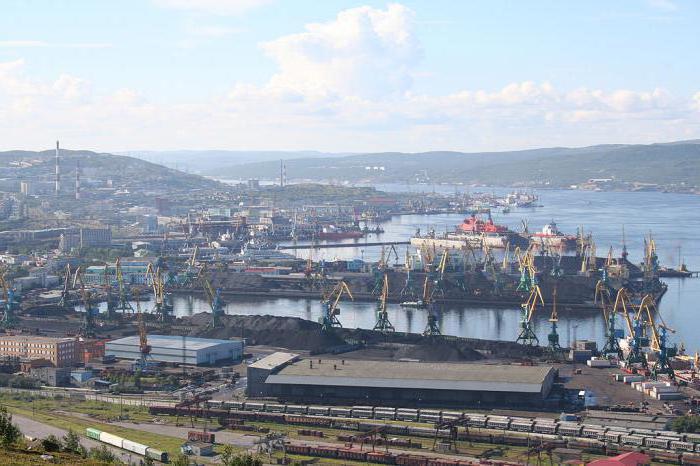
Among others, the following stand out: Indiga, Teriberka, Naryan-Mar. Norwegian ports are Kirkenes, Vadso and Vardo. The Barents Sea contains not only merchant navy our country, but also the naval, including nuclear submarines.
The Barents Sea is the marginal sea of the Arctic Ocean. It washes the shores of Russia and Norway. The sea is bounded by the northern coast of Europe and the archipelagos of Svalbard, Franz Josef Land and Novaya Zemlya. The sea is located on the continental shelf. The southwestern part of the sea does not freeze in winter due to the influence of the North Atlantic Current. The southeastern part of the sea is called the Pechora Sea. The Barents Sea is of great importance for transport and for fishing - there are large ports - Murmansk and Vardø (Norway). Before World War II, Finland also had access to the Barents Sea: Petsamo was its only ice-free port. A serious problem is the radioactive pollution of the sea due to the activities of Norwegian plants for the processing of radioactive waste. Recently, the sea shelf of the Barents Sea towards Spitsbergen has become the object of territorial disputes between the Russian Federation and Norway (as well as other states).
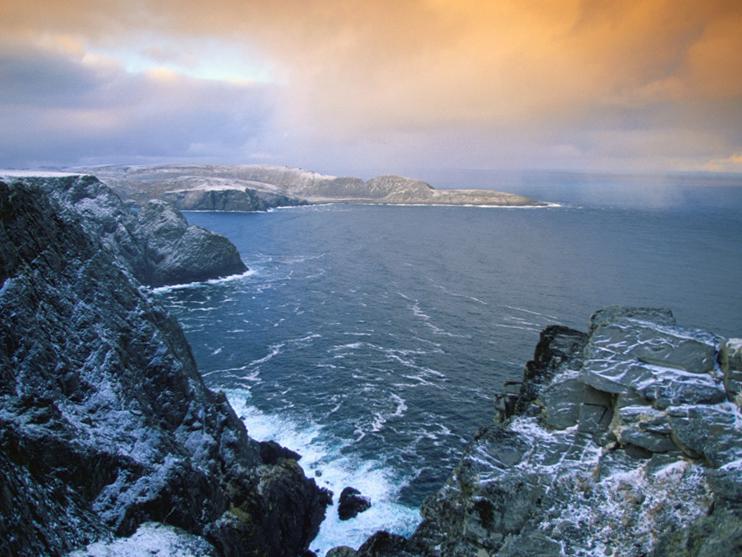
The shores of the Barents Sea are predominantly fjord, high, rocky, heavily indented. The largest bays: Porsanger Fjord, Varanger Bay (also known as Varanger Fjord), Motovsky Bay, Kola Bay, etc. East of the peninsula Kanin Nose coastal relief changes dramatically - the banks are mostly low and slightly indented. There are 3 large shallow bays here: (Cheshskaya Bay, Pechora Bay, Khaipudyrskaya Bay), as well as several small bays.
Bottom reliefThe Barents Sea is located within the continental shelf, but, unlike other similar seas, most of it has a depth of 300-400 m, an average depth of 222 m and a maximum depth of 600 m in the trench of Bear Island. Plains (Central Plateau), uplands (Central, Perseus (minimum depth 63 m)], depressions (Central, maximum depth 386 m) and troughs (Western (maximum depth 600 m) Franz Victoria (430 m) and others) are distinguished. The southern part of the seabed is mostly less than 200 m deep and has a leveled topography.
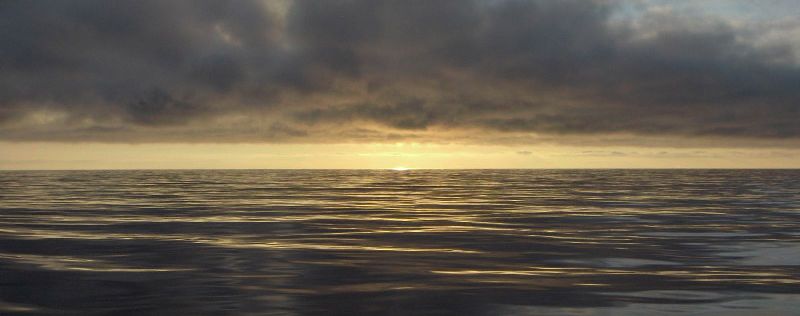
The salinity of the surface layer of water in the open sea during the year is 34.7-35.0 ‰ in the southwest, 33.0-34.0 in the east, and 32.0-33.0 in the north. In the coastal zone of the sea in spring and summer, salinity decreases to 30-32 ‰, by the end of winter it increases to 34.0-34.5 ‰.
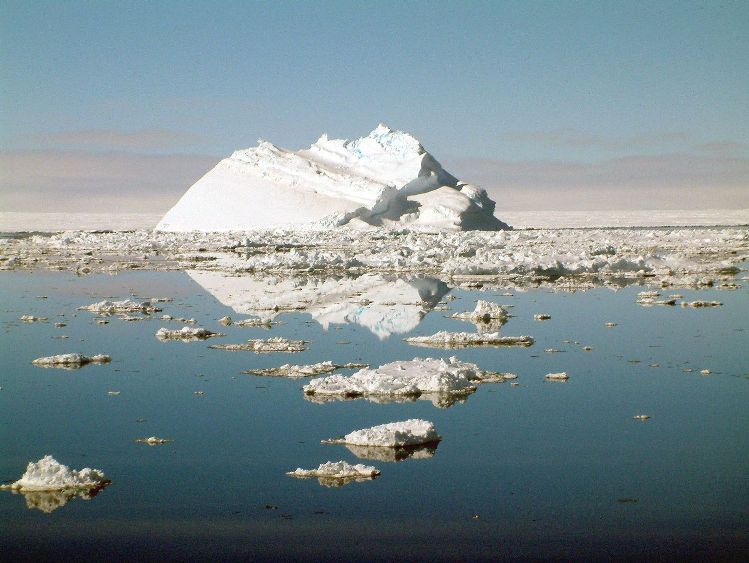
Arrival of warm Atlantic waters defines relatively high fever and salinity in the southwestern part of the sea. Here in February - March the surface water temperature is 3 ° C, 5 ° C, in August it rises to 7 ° C, 9 ° C. North of 74 ° N. NS. and in the southeastern part of the sea in winter the surface water temperature is below -1 ° C, and in the summer in the north 4 ° C, 0 ° C, in the southeast 4 ° C, 7 ° C. In summer, in the coastal zone, the surface layer of warm water 5-8 meters thick can warm up to 11-12 ° C.
Ice coverSevere climatic conditions in the north and east of the Barents Sea determine its large ice extent. In all seasons of the year, only the southwestern part of the sea remains ice-free. The ice cover reaches its greatest distribution in April, when about 75% of the sea surface is occupied by floating ice. In extremely unfavorable years at the end of winter, floating ice comes directly to the shores of the Kola Peninsula. The smallest amount of ice falls at the end of August. At this time, the ice boundary moves away for 78 ° N. NS. In the northwest and northeast of the sea, ice is usually kept all year round, but in some favorable years the sea is almost completely or even completely free of ice.
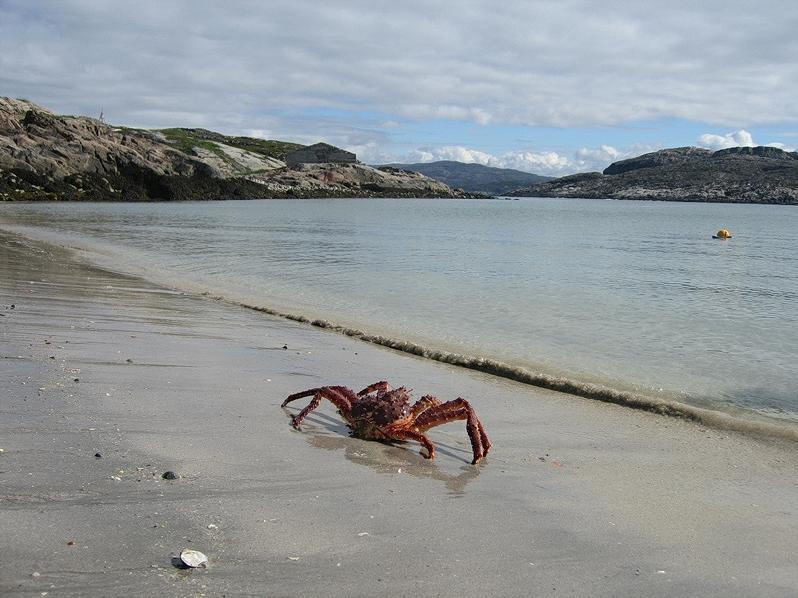
The Barents Sea is rich in various fish species, plant and animal plankton and benthos. Algae are common along the southern coast. Of the 114 species of fish inhabiting the Barents Sea, 20 species are most important in commercial terms: cod, haddock, herring, sea bass, catfish, flounder, halibut, etc. Mammals include: polar bear, seal, harp seal, beluga whale, etc. There is a seal fishery. Bird colonies abound on the coasts (guillemots, guillemots, kittiwakes). In the XX century, the Kamchatka crab was introduced, which was able to adapt to new conditions and begin to multiply intensively. Many different echinoderms, sea urchins and sea stars of different species are distributed along the bottom of the entire water area of the sea.
